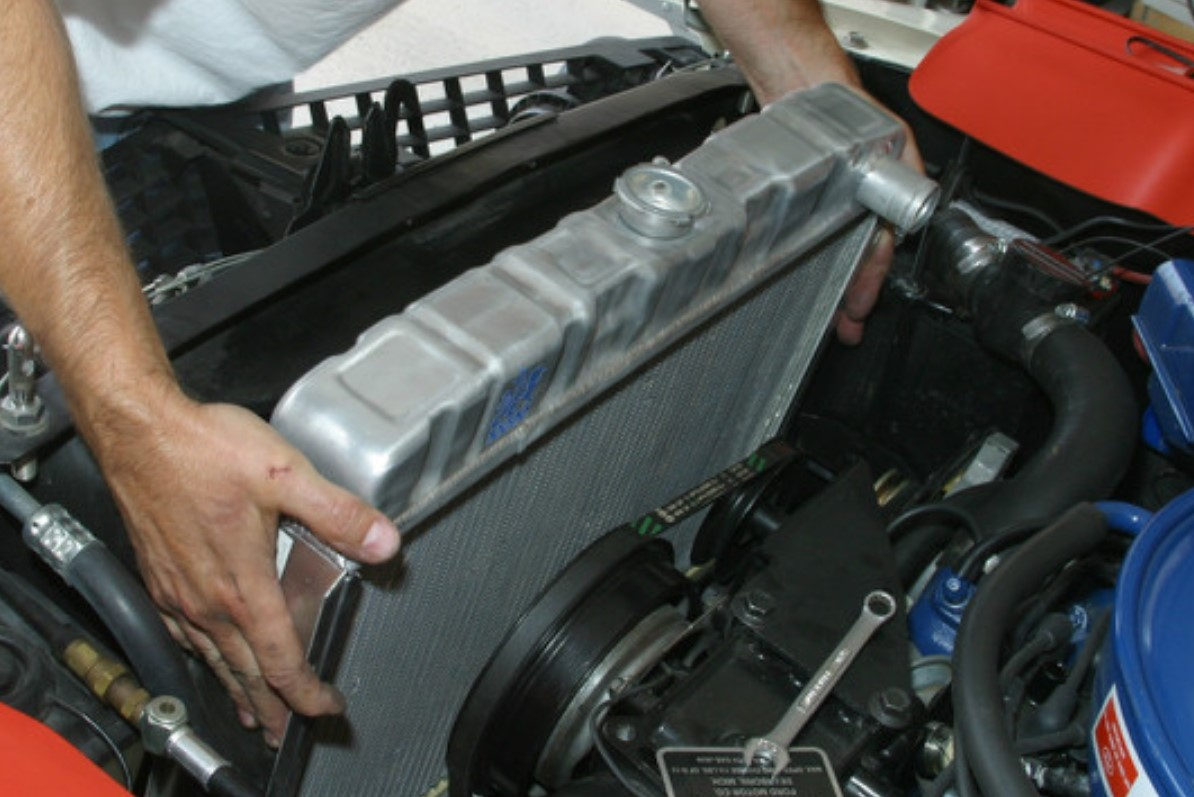Getting to know the radiator and what damages it

Car engines heat up and overheating is not a far possibility, so there needs to be a mechanism to help keep the heat off. This is what car radiators do. They absorb the heat that the engine produces to maintain the optimum engine temperature. To understand what the radiator specifically does, you need to take a look at the whole picture of your car’s cooling system.
How does your car’s cooling system work?
A car engine can heat up to as high as 1600°F while the ideal operating temperature it must maintain is just around 200°F. Needless to say, the cooling system of your car does a pretty heavy job.
To reduce heat in the engine block, coolant is pumped through pipes that run through the engine. These pipes are mainly concentrated around the combustion chambers where the most heat is generated. The principle of heat transfer is that heat naturally goes to an area of lower temperature. The coolant pumped through the pipes absorbs the heat because it’s cooler than the temperature of the engine.
The water pump will then supply the heated coolant to the radiator. In the radiator, there are air slots or fins where air from a cooling fan passes through to cool down the coolant before it gets supplied back to the engine.
When you start your vehicle, the coolant doesn’t automatically get pumped to the radiator. Otherwise, the engine will never reach its operating temperature. The thermostat shuts off the flow of the coolant to the radiator and only opens when the engine reaches the ideal temperature.
Knowing how important a role the radiator plays in your car’s cooling system, it’s time to get familiar with ways the radiator gets damaged.
What causes damage to your car’s radiator?
Front collision
The radiator is located just behind the front grille, which means that it gets a direct impact in case you collide with the front of your car. In this case, repairing is an option, but it’s often an expensive and lengthy process. You will be better off buying a replacement.
Overheating
Yes, it’s possible for the radiator to overheat, too. This is the case when there is not enough coolant circulating in the cooling system. This happens when there is a leak because of a hole in the radiator. It can easily be fixed, so don’t worry too much.
Rust
Flushing your radiator regularly is necessary to prevent rust which can clog it. This is especially true for older cars. If you notice that the coolant has turned brown in color, it’s a signal to flush the radiator and refill it with fresh coolant.
Damaged pressure cap
The pressure cap ensures that the pressure built up for the heating of the coolant is under control. A bad pressure cap may cause the coolant to leak or burst. White streaks on the radiator neck may be from leaking so take that as a sign to check if the pressure cap is still in good condition.
Overall, radiators are built tough. It will take a lot to damage it, but that doesn’t mean you don’t show it the care and attention just like other important car components.